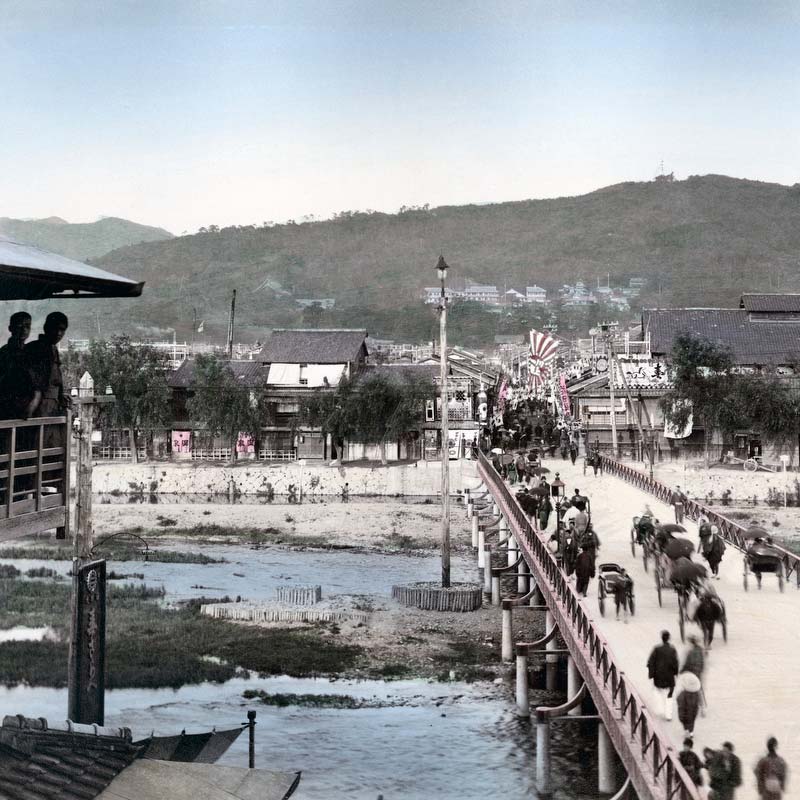Passengers are getting off a streetcar in Tokyo, while others are waiting.
When this photograph was taken in May 1934, Tokyo’s streetcar system was immense and extremely popular, as can be seen from the number of people riding the streetcar on this image.
Tokyo’s horse-drawn streetcars started operations on June 25, 1882. On August 22, 1903, the streetcars were electrified, and the company’s name was changed from Tokyo Horse-drawn Railway to Tokyo Electric Railway (Toden). The company’s first route was between Shinagawa and Shinbashi.
In 1906, the company merged with Tokyo Urban Railway (Gaitetsu) and Tokyo Electric Railway to form the Tokyo Railways. Tokyo City purchased Tokyo Railways in 1911 and renamed it Tokyo City Streetcar. In 1943, the name changed once again, this time to Tokyo Metropolitan Bureau of Transportation, when Tokyo City was abolished and its administrative functions were taken over by Tokyo Prefecture.
At its peak, Toden operated 41 routes with 213 kilometers of track. As cars increasingly became common, passengers decreased and between 1967 and 1972, 181 km of track was abandoned.
A total closure was avoided when in 1974 the remaining routes were consolidated into the Arakawa Line.
From 1990, things began to look a little bit more positive again for the Tokyo streetcar. That year, new rolling stock was introduced for the first time in 28 years. Ten years later, a new station was added (Arakawa Itchumae). And in 2007, once again new rolling stock was introduced.1
This glass slide is one of a series of slides of Japan that was used by the New York State Education Department to teach students about Japan.
Notes
1 Wikipedia, Tokyo Toden. Retrieved on 2008-02-21.
Published
Updated
Reader Supported
Old Photos of Japan aims to be your personal museum for Japan's visual heritage and to bring the experiences of everyday life in old Japan to you.
To enhance our understanding of Japanese culture and society I track down, acquire, archive, and research images of everyday life, and give them context.
I share what I have found for free on this site, without ads or selling your data.
Your support helps me to continue doing so, and ensures that this exceptional visual heritage will not be lost and forgotten.
Thank you,
Kjeld Duits
Reference for Citations
Duits, Kjeld (). Tokyo 1934: Streetcar Passengers, OLD PHOTOS of JAPAN. Retrieved on April 18, 2024 (GMT) from https://www.oldphotosjapan.com/photos/96/streetcar-passengers




There are currently no comments on this article.